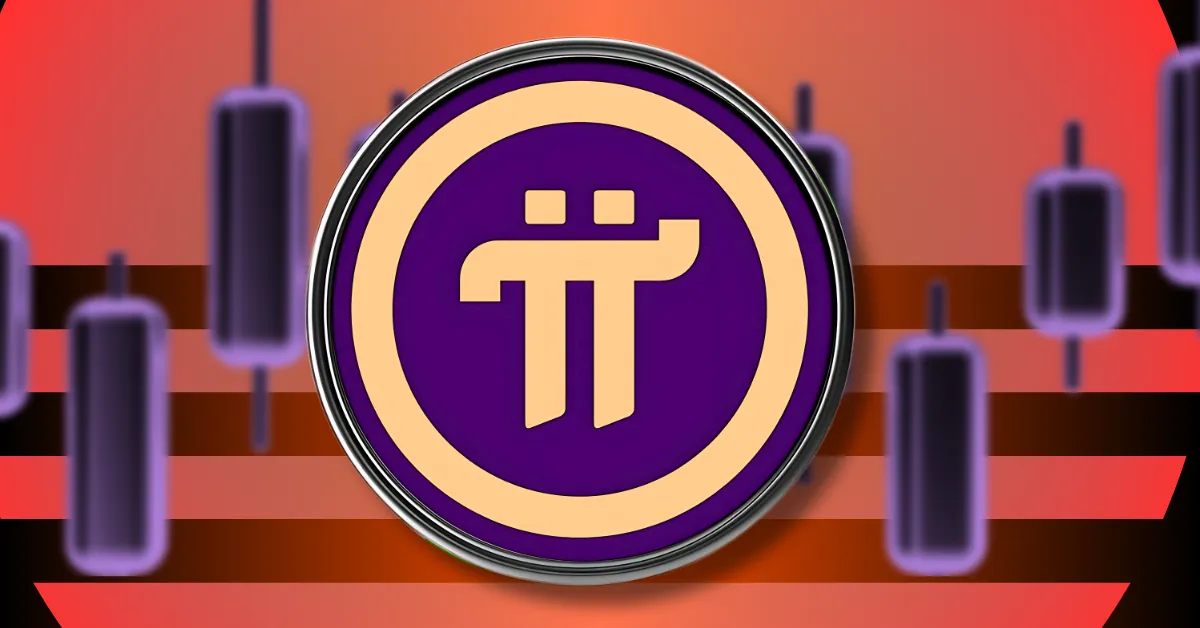The enigmatic appeal of Pi Network lies in its unique approach to cryptocurrency mining, which diverges significantly from traditional models like Bitcoin. Launched in 2019, Pi Network has captured global attention by enabling users to mine Pi coins directly from their smartphones, a process that requires minimal computational resources and is touted as environmentally friendly. This accessibility has attracted millions of users, fostering both optimism and skepticism about its long-term sustainability. The project’s promise of democratizing cryptocurrency mining has sparked debates about its potential to revolutionize the digital finance landscape or become another fleeting trend in the volatile crypto space.
As of July 9, 2025, the price of Pi hovers around $0.46 USD, with minor fluctuations observed across different exchanges and reporting platforms. The price range typically falls between $0.45 and $0.47 USD per Pi coin, reflecting slight discrepancies due to varying data aggregation methods and trading volumes on different platforms. Pi Network’s market capitalization stands at approximately $3.5 billion USD, a substantial figure that underscores its theoretical market presence. However, it’s important to note that this valuation is based on the total supply of Pi coins mined, but the actual circulating supply and the ability to transact Pi remain limited due to the network’s current enclosed mainnet phase.
The 24-hour trading volume for Pi exhibits significant variability, ranging from $4 million to $60 million USD, depending on the reporting source. This inconsistency highlights the challenges in accurately assessing Pi’s market activity, as trading primarily occurs on IOU (I Owe You) markets or within limited exchange environments. The speculative nature of Pi’s valuation is driven by several key factors, including the anticipation of future utility and adoption, the size and engagement of the Pi Network user base, and the progress of the network’s development. Positive developments, such as the launch of new features and strategic partnerships, can significantly boost investor sentiment and drive up the price. Conversely, a bearish market environment can exert downward pressure on Pi’s valuation.
Pi Network’s current operation within an “enclosed mainnet” presents both advantages and disadvantages. This controlled environment allows the core team to test and develop the network while ensuring KYC (Know Your Customer) compliance, which helps prevent fraud and build trust. However, the enclosed mainnet also limits liquidity, as users cannot freely trade Pi on major exchanges, hindering price discovery and potentially suppressing its value. The centralized nature of the enclosed mainnet raises concerns about control and transparency, with critics arguing that the Pi Network core team holds too much power over the network. Additionally, the lack of open trading leads to price discrepancies between different IOU markets and internal Pi marketplaces, making it difficult to establish a fair and accurate market value.
The unique mining mechanism of Pi Network, which allows users to earn Pi coins by simply checking into the app daily, has democratized cryptocurrency participation. This accessibility has contributed to the network’s rapid user growth, making it an attractive option for individuals who lack the resources for traditional mining. However, the ease of mining Pi has led to questions about the intrinsic value of the coin. Critics argue that the abundance of Pi coins could dilute their value over time, a concern the Pi Network core team aims to address by halving the mining rate as the network grows and implementing mechanisms to burn Pi coins. The balance between accessibility and value proposition remains a critical factor in determining Pi Network’s long-term viability.
The future of Pi Network hinges on its ability to successfully transition to an open mainnet and build a thriving ecosystem of applications and utilities. The transition to an open mainnet is crucial for enabling free trading and exchange of Pi coins, which will facilitate price discovery and increase liquidity. The timing and execution of this transition will be pivotal in determining the network’s success. Additionally, the development of useful and engaging applications within the Pi ecosystem is essential to driving demand for Pi coins. This includes e-commerce platforms, social networks, and other utilities that leverage Pi as a medium of exchange.
Navigating the complex and evolving regulatory landscape for cryptocurrencies presents a significant challenge for Pi Network. The project must ensure compliance with applicable laws and regulations in various jurisdictions to avoid legal and financial risks. Furthermore, Pi Network faces competition from other cryptocurrencies and blockchain platforms, necessitating a clear differentiation through its unique value proposition and execution. Scalability is another critical factor, as the network must be able to handle increasing transaction volumes to maintain a smooth and efficient user experience.
In conclusion, Pi Network presents a compelling vision of a decentralized and accessible cryptocurrency. Its innovative mining mechanism and large user base position it as a potential disruptor in the traditional cryptocurrency landscape. However, the project faces significant challenges, including the need to transition to an open mainnet, develop a thriving ecosystem, and navigate regulatory hurdles. The success of Pi Network will ultimately depend on its ability to deliver on its promises and overcome these challenges. Whether it becomes a revolutionary force in digital finance or fades into obscurity remains to be seen, but its journey is undoubtedly one worth watching. The balance between accessibility and value, along with the network’s ability to adapt to market dynamics, will be key determinants in shaping its future trajectory.











